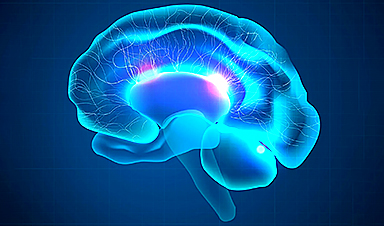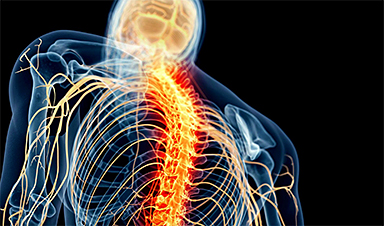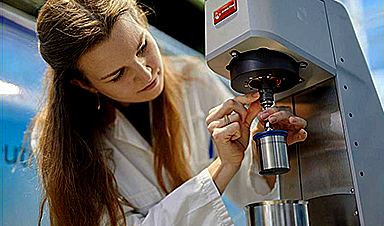Recent research identifies “sharp wave-ripples” in the hippocampus as a brain mechanism that determines which daily experiences become permanent memories, with significant ripples during idle moments leading to memory consolidation during sleep.
Neuroscientists have discovered over the past few decades that the brain converts some of daily experiences into lasting memories during sleep that same night. A recent study introduces a mechanism that decides which memories are important enough to be preserved in the brain until sleep solidifies them permanently.
Led by researchers from NYU Grossman School of Medicine, the study revolves around brain cells called neurons that “fire” – or bring about swings in the balance of their positive and negative charges – to transmit electrical signals that encode memories. Large groups of neurons in a brain region called the hippocampus fire together in rhythmic cycles, creating sequences of signals within milliseconds of each other that can encode complex information.
Called “sharp wave-ripples,” these “shouts” to the rest of the brain represent the near-simultaneous firing of 15 percent of hippocampal neurons, and are named for the shape they take when their activity is captured by electrodes and recorded on a graph.
While past studies had linked ripples with memory formation during sleep, the new study, published recently in the journal Science, found that daytime events followed immediately by five to 20 sharp wave-ripples are replayed more during sleep and so consolidated into permanent memories. Events followed by very few or no sharp wave-ripples failed to form lasting memories.
“Our study finds that sharp wave-ripples are the physiological mechanism used by the brain to ‘decide’ what to keep and what to discard,” said senior study author György Buzsáki, MD, PhD, the Biggs Professor of Neuroscience in the Department of Neuroscience and Physiology at NYU Langone Health.
Walk and Pause
The new study is based on a known pattern: mammals including humans experience the world for a few moments, then pause, then experience a little more, then pause again. After we pay attention to something, say the study authors, brain computation often switches into an “idle” re-assessment mode. Such momentary pauses occur throughout the day, but the longest idling periods occur during sleep.
Buzsaki and colleagues had previously established that no sharp wave-ripples occur as we actively explore sensory information or move, but only during the idle pauses before or after. The current study found that sharp wave-ripples represent the natural tagging mechanism during such pauses after waking experiences, with the tagged neuronal patterns reactivated during post-task sleep.
Importantly, sharp wave-ripples are known to be made up the firing of hippocampal “place cells” in a specific order that encodes every room we enter, and each arm of a maze entered by a mouse. For memories that are remembered, those same cells fire at high speed, as we sleep, “playing back the recorded event thousands of times per night.” The process strengthens the connections between the cells involved.
For the current study, successive maze runs by study mice were tracked via electrodes by populations of hippocampal cells that constantly changed over time despite recording very similar experiences. This revealed for the first time the maze runs during which ripples occurred during waking pauses, and then were replayed during sleep.
Sharp wave-ripples were typically recorded when a mouse paused to enjoy a sugary treat after each maze run. The consumption of the reward, say the authors, prepared the brain to switch from an exploratory to an idle pattern so that sharp wave-ripples could occur.
Using dual-sided silicon probes, the research team was able to record up to 500 neurons simultaneously in the hippocampus of animals during maze runs. This in turn created a challenge because data becomes exceedingly complex the more neurons are independently recorded. To gain an intuitive understanding of the data, visualize neuronal activity, and form hypotheses, the team successfully reduced the number of dimensions in the data, in some ways like converting a three-dimensional image into a flat one, and without losing the data’s integrity.
“We worked to take the external world out of the equation, and looked at the mechanisms by which the mammalian brain innately and subconsciously tags some memories to become permanent,” said first author Wannan (Winnie) Yang, PhD, a graduate student in Buzsáki’s lab. “Why such a system evolved is still a mystery, but future research may reveal devices or therapies that can adjust sharp wave-ripples to improve memory, or even lessen recall of traumatic events.”
Reference: “Selection of experience for memory by hippocampal sharp wave ripples” by Wannan Yang, Chen Sun, Roman Huszár, Thomas Hainmueller, Kirill Kiselev and György Buzsáki, 28 March 2024, Science.
DOI: 10.1126/science.adk8261
News
Breakthrough in Antimicrobial Technology with Cinnamon-Based Nanokiller
The need for innovative antimicrobial agents has become increasingly urgent due to the rise of antibiotic-resistant pathogens and the persistent threat of infections acquired during hospital stays. Traditional antibiotics and antiseptics are often ineffective [...]
The Silent Battle Within: How Your Organs Choose Between Mom and Dad’s Genes
Research reveals that selective expression of maternal or paternal X chromosomes varies by organ, driven by cellular competition. A new study published today (July 26) in Nature Genetics by the Lymphoid Development Group at the MRC [...]
Study identifies genes increasing risk of severe COVID-19
Whether or not a person becomes seriously ill with COVID-19 depends, among other things, on genetic factors. With this in mind, researchers from the University Hospital Bonn (UKB) and the University of Bonn, in [...]
Small regions of the brain can take micro-naps while the rest of the brain is awake and vice versa
Sleep and wake: They're totally distinct states of being that define the boundaries of our daily lives. For years, scientists have measured the difference between these instinctual brain processes by observing brain waves, with [...]
Redefining Consciousness: Small Regions of the Brain Can Take Micro-Naps While the Rest of the Brain Is Awake
The study broadly reveals how fast brain waves, previously overlooked, establish fundamental patterns of sleep and wakefulness. Scientists have developed a new method to analyze sleep and wake states by detecting ultra-fast neuronal activity [...]
AI Reveals Health Secrets Through Facial Temperature Mapping
Researchers have found that different facial temperatures correlate with chronic illnesses like diabetes and high blood pressure, and these can be detected using AI with thermal cameras. They highlight the potential of this technology [...]
Breakthrough in aging research: Blocking IL-11 extends lifespan and improves health in mice
In a recent study published in the journal Nature, a team of researchers used murine models and various pharmacological and genetic approaches to examine whether pro-inflammatory signaling involving interleukin (IL)-11, which activates signaling molecules such [...]
Promise for a universal influenza vaccine: Scientists validate theory using 1918 flu virus
New research led by Oregon Health & Science University reveals a promising approach to developing a universal influenza vaccine—a so-called "one and done" vaccine that confers lifetime immunity against an evolving virus. The study, [...]
New Projects Aim To Pioneer the Future of Neuroscience
One study will investigate the alterations in brain activity at the cellular level caused by psilocybin, the psychoactive substance found in “magic mushrooms.” How do neurons respond to the effects of magic mushrooms? What [...]
Decoding the Decline: Scientific Insights Into Long COVID’s Retreat
Research indicates a significant reduction in long COVID risk, largely due to vaccination and the virus’s evolution. The study analyzes data from over 441,000 veterans, showing lower rates of long COVID among vaccinated individuals compared [...]
Silicon Transformed: A Breakthrough in Laser Nanofabrication
A new method enables precise nanofabrication inside silicon using spatial light modulation and laser pulses, creating advanced nanostructures for potential use in electronics and photonics. Silicon, the cornerstone of modern electronics, photovoltaics, and photonics, [...]
Caught in the actinium: New research could help design better cancer treatments
The element actinium was first discovered at the turn of the 20th century, but even now, nearly 125 years later, researchers still don't have a good grasp on the metal's chemistry. That's because actinium [...]
Innovative Light-Controlled Drugs Could Revolutionize Neuropathic Pain Treatment
A team of researchers from the Institute for Bioengineering of Catalonia (IBEC) has developed light-activated derivatives of the anti-epileptic drug carbamazepine to treat neuropathic pain. Light can be harnessed to target drugs to specific [...]
Green Gold: Turning E-Waste Into a Treasure Trove of Rare Earth Metals
Scientists are developing a process inspired by nature that efficiently recovers europium from old fluorescent lamps. The approach could lead to the long-awaited recycling of rare earth metals. A small molecule that naturally serves [...]
Cambridge Study: AI Chatbots Have an “Empathy Gap,” and It Could Be Dangerous
A new study suggests a framework for “Child Safe AI” in response to recent incidents showing that many children perceive chatbots as quasi-human and reliable. A study has indicated that AI chatbots often exhibit [...]
Nanoparticle-based delivery system could offer treatment for diabetics with rare insulin allergy
Up to 3% of people with diabetes have an allergic reaction to insulin. A team at Forschungszentrum Jülich has now studied a method that could be used to deliver the active substance into the [...]




















